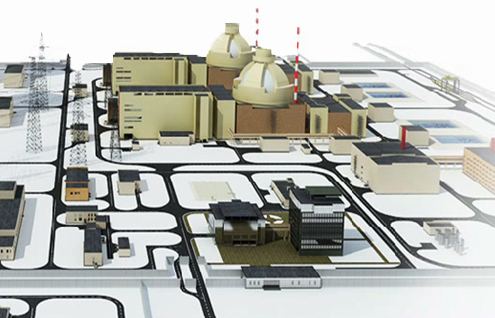 | ||
The VVER-TOI or WWER-TOI (Водо-водяной энергетический реактор типовой оптимизированный информатизированный; Vodo-Vodyanoi Energetichesky Reactor Tipovoi Optimizirovanniy Informatizirovanniy; Water-Water Energy Reactor Universal Optimized Digital) is a design for a two-unit nuclear power plant. It would use VVER-1300/510 water pressurized reactors constructed to meet modern nuclear and radiation safety requirements.
Contents
- Purpose
- Tasks
- Project initial requirements
- Population and environment protection
- Safety barriers
- NPP protection against external impacts
- Severe accidents control
- Typical project
- Innovative designing technologies
- Upgrading possibility
- Virtual Prototyping Center
- Deadlines of the project implementation
- References

According to the results of the President Committee session for upgrading and development of the Russian economy of July 22, 2009, the President of the Russian Federation set out the task for the nuclear industry of optimizing VVER operational characteristics as a priority.

State Corporation “Rosatom” builds nuclear power plants in Russia. The scope of nuclear power plant development has been defined until 2020, taking into account the projected power-plant engineering capabilities to produce main equipment for nuclear power plants with typical VVER units annually, and capabilities of nuclear construction power complex to put the main equipment into operation at different sites simultaneously.
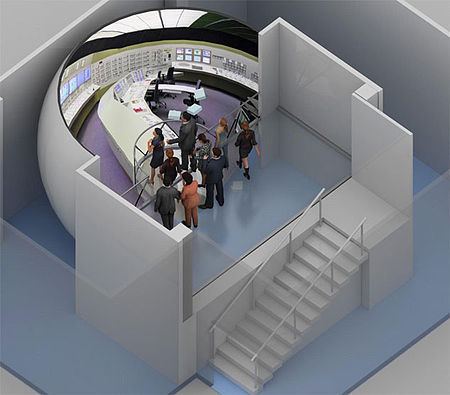
The VVER-TOI project is developed on the basis of the design documents worked out for AES-2006, considering the experience gained in development of projects based on VVER technology both in Russia and abroad, such as Novovoronezh NPP-2.
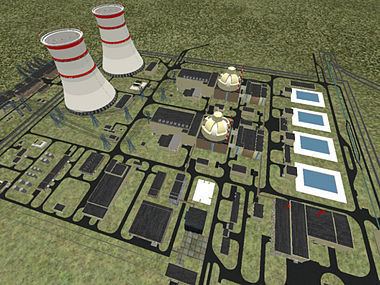
Purpose
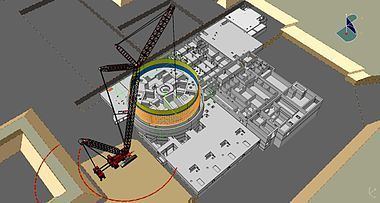
VVER-TOI is a new generation III+ Power Unit based on VVER technology, which meets a number of goals using modern information and management technologies.
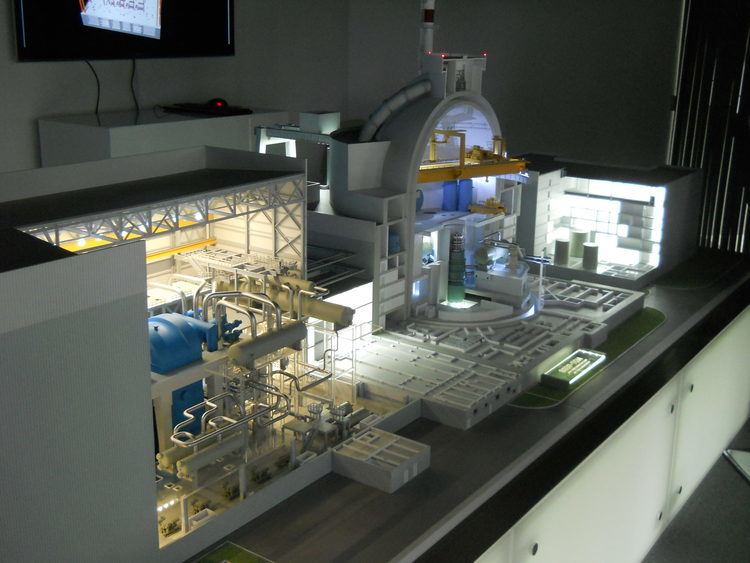
The VVER-TOI design is intended to improve the competitiveness of Russian VVER technology in international markets; it is oriented to further serial construction of NPP with VVER-TOI both in Russia and abroad.
Tasks
- Develop a universal project for NPP Power Unit based on the optimized technical solutions made for AES-2006.
- Develop power-unit information model and provide its further information support at all the stages of NPP life cycle.
- Develop common information space for the territorially distanced project participants, in particular to make portal and integration decisions.
- Develop modern software for designing and engineering, ensuring transfer of all the required information to the consequent stages of NPP life cycle.
- Develop purchasing, supply and automated identification systems.
- Develop simulation system for Power Unit construction providing an interaction among designing system, equipment purchasing system and construction deadlines control system in the terms of real time.
Project initial requirements
- Stability in the terms of critical external impacts and natural disasters.
- Correspondence to the world accepted rules and regulations.
- Correspondence to the climatic conditions from the tropics up to Northern regions.
- Independence in the terms of external power and water supply sources loss.
Population and environment protection
The radiation safety is arranged and implemented to prevent inadmissible impacts caused by ionizing radiation sources on the materials, population and environment in the area of NPP siting.
The concept of providing radiation and nuclear safety in VVER-TOI project is based on the following:
Safety barriers
VVER-TOI project shows implementation of the following principles ensuring the modern concept of the repetitive defense in depth:
NPP protection against external impacts
Natural disasters and human-induced impacts specifying site conditions are accepted taking into account possibility of constructing NPP with VVER-TOI in various geographical regions, as well as in the regions characterized by different human-induced impacts.
The most important impacts, which parameters affected significantly technical solutions on VVER-TOI project are listed below:
NPP systems and components as a part of the base - case project are developed by reference to the following natural disasters and design human-induced impacts:
Severe accidents control
Modern NPPs are characterized by the unprecedented low risk of ionizing radiation propagation and radionuclide emission to environment. This result is achieved through newest protective and localizing technologies of the safety system. VVER-TOI project shows, as a basis variant, the configuration based on two channel structure of active safety systems without internal backup, and four channel structure of passive safety systems. Profile of the active safety systems is as follows:
Profile of the passive safety systems is as follows:
The accident control facility of the VVER-TOI project includes a corium trap, a unique Russian safety technology, which provides the guaranteed safety control through melt localizing and cooling in the terms of a severe accident at the beyond-vessel stage of core-melt localization. Within the frame of VVER-TOI, there are performed the works directed toward optimization of technical solutions made for corium trap project to decrease cost indicators and justify the corium trap operation efficiency. It is supposed to achieve a considerable decrease in the trap vessel overall sizes and sacrificed materials weight, as well as to transfer to module design of the trap vessel that make it possible to simplify transportation of the large-sized equipment to the site of NPP construction.
Combination of passive and active safety systems provided for in the VVER-TOI project ensures that core will not be destroyed for not less than 72 hours from the moment of severe accident happening in case of any possible scenario. The corresponding technical solutions guarantee that reactor plant will be transferred to safe conditions at any combination of initial events (natural and human-induced) triggering to loss of all the electric power sources. This fact increases considerably the project competitiveness both in foreign and domestic markets of electric power production.
Typical project
VVER-TOI is a basis for development of NPP serial construction projects at the sites located within a wide range of natural-climatic conditions, considering the whole spectrum of internal extreme and external human-induced impacts, which are specific for all eventual construction sites. The project is developed to the intent that its application in individual NPP projects would not require change of the main conceptual, engineering and layout solutions, as well as additional safety analysis and other justifying documents to be submitted to the state supervisory authorities for receiving construction licenses.
Innovative designing technologies
- United information space is a multi-platform software and hardware complex intended for control of the engineering data for engineering, designing, as well as arranging communication between territorially-distanced project participants.
- An expanded functional analysis (based on the detail application of IAEA standards) is the practical basis to specify an assignment for automatic performance of NPP technological processes, designing organization-functional operation structure, and grounded calculation of normal-mode ratio.
- MultiD-designing serves as a developed “field-engineering” experience that considerably increases possibility of the project controlling through detail working-out the process solutions on construction and equipment installation.
Upgrading possibility
VVER-TOI power unit circuits, equipment, systems and structures design make it possible to upgrade it allowing for:
Virtual Prototyping Center
Virtual Prototyping Center is a complex of soft-and-hardware facilities making it possible to visualize design and engineering models. It represents a 6-metre-diameter (20 ft) sphere, in which center attendance being at 2-metre (6.6 ft) height at a transparent glass platform can see 3D-format picture. It allows everyone to go into virtual worlds.
The complex practical use includes the following:
At the present moment there are no analogous technical implementations in Russia while designing complicated technological objects. This demonstration method is used only by defense industry, large automobile corporations and aircraft engineering companies.
Deadlines of the project implementation
2009:
2010:
2011:
2012:
The project has been realized since 2009 and will be completed in 2012.
